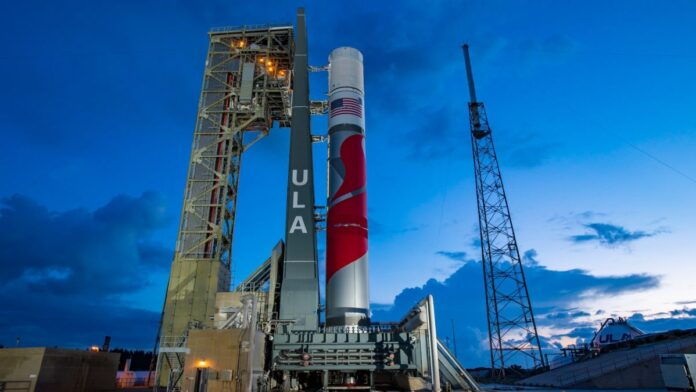United Launch Alliance (ULA) is gearing up for a critical test firing of its next-generation rocket after a recent fueling check, and it could happen as soon as this week.
On Monday morning (May 22), Bruno stated on Twitter that the company’s new Vulcan Centaur rocket was returning to Space Launch Complex 41 at Cape Canaveral Space Force Station. Now that the rocket is back at the pad, Vulcan’s static fire test (in which the rocket’s engines are ignited while it remains on the ground) could happen any day. “We are targeting as soon as tomorrow for the Flight Readiness Firing,” a representative from ULA told Space.com on Tuesday (May 23), “but it will depend on range availability.” On Wednesday (March 24), ULA CEO Tory Bruno intimated on Twitter that the test could happen as soon as Thursday (March 25).
If all goes according to plan, and Vulcan’s static fire and wet dress rehearsal go smoothly, the rocket’s first launch will be its next major milestone. Bruno has previously indicated sometime in June or July as Vulcan’s earliest likely launch date, with launch windows available 4 to 5 days every month.
Related: Vulcan Centaur rocket: The space workhorse of tomorrow
ULA previously completed a successful tanking test on the company’s new Vulcan on May 12, filling the rocket with over a million pounds of fuel during the test. ULA engineers then evaluated the fueling test results against Vulcan’s design expectations.
Two days after the successful tanking, Bruno indicated in a May 15 tweet that the tests were “good,” but that teams would be making some parameter adjustments ahead of Vulcan’s first static fire. That milestone moved Vulcan one step closer to its first launch, with only a static test firing of the engines and wet dress rehearsal left to validate the vehicle.
The rocket’s main booster BE-4 engines use liquified natural gas (LNG) and liquid oxygen for fuel, and will be able to produce over half a million pounds of thrust at liftoff. Vulcan’s Centaur V second stage RL10 engines are powered using liquid hydrogen and liquid oxygen.
The 202-foot (62-meter) Vulcan Centaur will be capable of lifting 7.7 tons (7 metric tonnes) of payload to geostationary orbit, over 22,000 miles (36,000 km) above the Earth. The rocket was designed to replace ULA’s veteran Atlas V and Delta IV launch vehicles that have been in service for two decades.
Already, NASA has added Vulcan to its lineup of rockets for future missions. Amazon has also contracted ULA for 38 Vulcan launches to support the deployment of its Project Kuiper communications satellite constellation.

